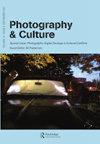Get in: Rhetoric and Realities of Diversity in the Global University
IF 0.3
4区 艺术学
0 ART
引用次数: 0
Abstract
Abstract Diversity – in the nominal sense of widening access to education beyond majority group interests – is a stated objective for many institutions of higher education worldwide. However, different narratives of national and institutional identity play a role in how programmes of diversity are conceived. In recent university reforms initiated in Japan by MEXT (Japanese Ministry of Education, Culture, Sports, Science and Technology), the drive to internationalize universities through increasing the number of foreign students, faculty and collaborations runs alongside an historical and reactionary othering of rational and critical thinking as “western learning.” By contrast, for universities in the “west” the pursuit of diversity is considered an affirmation of the university as a site of civil and rational discourse, in which the welcoming of different voices is considered in terms of being both a moral imperative and institutional asset. Using Bill Readings’ 1996 critique of the modern university as a bureaucratic corporation, “The University in Ruins” as a reference point, the dissonance between the policy goal of diversity and what may actually happen in a classroom is discussed here from personal experience of teaching the history of photography, and other subjects, in Japanese Universities. Modes of classroom interaction and the role of the teacher, beyond culture-specific models, are interrogated, and finally discussed in relation to a holistic view of education espoused in the teaching methodologies of Charles A. Curran and Caleb Gattegno.进入:全球大学多样性的修辞和现实
多样性——名义上是指扩大受教育的机会,超越多数群体的利益——是全球许多高等教育机构的既定目标。然而,国家和机构认同的不同叙述在如何构思多样性方案方面发挥了作用。在日本教育、文化、体育、科学和技术省最近发起的大学改革中,通过增加外国学生、教师和合作来推动大学国际化的努力,与理性和批判性思维的历史和反动的“西学”相结合。相比之下,对于“西方”的大学来说,追求多样性被认为是对大学作为文明和理性话语场所的肯定,在这种场合,欢迎不同的声音被认为是一种道德要求和制度资产。以比尔·雷丁斯1996年对现代大学作为官僚主义公司的批判为参照点,“废墟中的大学”,从个人在日本大学教授摄影史和其他学科的经验来讨论多样性的政策目标与课堂上实际可能发生的情况之间的不协调。课堂互动模式和教师的角色,超越了特定文化的模式,被询问,并最终讨论了查尔斯·a·柯伦和迦勒·加特格诺的教学方法所支持的整体教育观。
本文章由计算机程序翻译,如有差异,请以英文原文为准。
求助全文
约1分钟内获得全文
求助全文

 求助内容:
求助内容: 应助结果提醒方式:
应助结果提醒方式:


